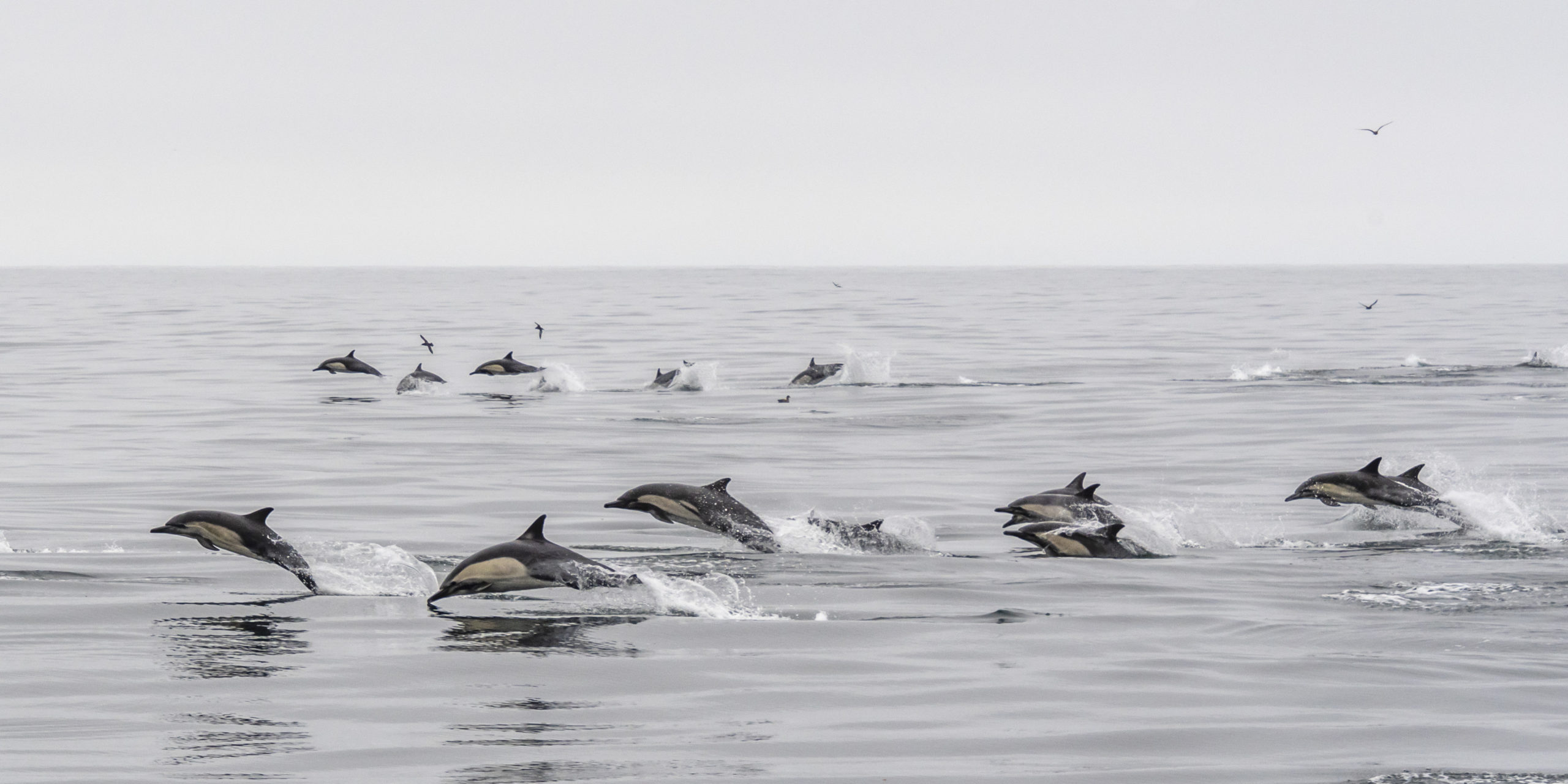
Blog: “The Benefits of a Strong Monterey Bay National Marine Sanctuary” by Dan Haifley
A by-product of the COVID-19 pandemic and the resultant reduction in human activity for shelter in place, was an increase in the sights and sounds of wildlife in unexpected places in our suburbs and cities. This reminds us that the natural world surrounding us also has a central role in supporting us. And that’s one reason why national marine sanctuaries, such as Monterey Bay National Marine Sanctuary, are important.
The ocean covers two-thirds of our planet, provides half the oxygen we breathe, and it supplies food, influences weather, and absorbs excess carbon from the atmosphere. Therefore protecting the ocean is an essential part of maintaining the natural system that supports humans and other species. And, national marine sanctuaries, such as the 6,094 square mile Monterey Bay National Marine Sanctuary, are important to that end.

Photo: Douglas Croft / NOAA Photos
National marine sanctuaries are remarkable tools to manage and restore ocean areas.
The National Oceanic and Atmospheric Administration (NOAA)’s system of national marine sanctuaries and marine national monuments, as well as marine national monuments managed by other federal agencies, provide a variety of useful tools for site-specific ocean management to protect habitats and the diverse array of life that inhabit them.
An article published in 2014 by then-National Marine Sanctuary Foundation President and CEO Jason Patlis and four others entitled “The National Marine Sanctuary System: The Once and Future Promise of Comprehensive Ocean Governance,” and then a four-page paper by seven authors published in 2018 entitled “Safe Harbors: The Many Benefits of Marine Monuments and Sanctuaries” provides a high-level view of the emerging field of ocean management.
The latter was published around the time as the introduction by U.S. Representative Jimmy Panetta of a proposed law that would establish the governance of U.S. ocean areas with an emphasis on managing their bio-diversity, very much as Panetta’s predecessor Sam Farr had done. Farr’s efforts led then-President Barack Obama to establish an ocean policy by the executive branch. The nation’s marine sanctuary system is an integral part of protecting strategic parts of our ocean and restoring the benefits its health can provide.
Some have argued that sanctuaries and monuments do not add value beyond existing non-extractive economic activities such as diving, tourism, and marine mammal watching. In other words, if this was not a sanctuary, wouldn’t there still be whale watching? This line of reasoning ignores the benefits that sanctuary and monument protection add through research and resource protection, which reduces the threats posed to those industries by, for example, oil spills and increases the public’s knowledge through research and education. The education mission of monuments and sanctuaries also enriches the public’s knowledge of the resources that exist, and the benefits provided by, their ocean.

Photo: Bob Talbot / NOAA Photos
Monterey Bay National Marine Sanctuary is an example of dynamic and effective ocean management.
Established in 1992 as a result of years of leadership by then-US Representative Leon Panetta and a concerted citizen campaign, Monterey Bay National Marine Sanctuary takes in waters off the coastline from southern Marin to northern San Luis Obispo counties including rich intertidal areas and the Monterey Bay submarine canyon that plunges deeply, quickly offshore Moss Landing. Davidson Seamount, further offshore, was added in 2009.
Monterey Bay National Marine Sanctuary is managed by a relatively small staff, and supported by the Monterey Bay Chapter of the National Marine Sanctuary Foundation (also known as Monterey Bay National Marine Sanctuary Foundation). Here are just a few ways that sanctuary management has made a difference:
- Oversight of the cleanup and remediation of hundreds of sites where vessel sunk or grounded, responding quickly to avert disaster and severe harm to the environment.
- Responding to sewage spills to ensure prompt action to stop or limit damage and bring about remediation and restoration.
- An exhibit on the “Sounds of the Sanctuary” at the Sanctuary Exploration Center has introduced thousands of visitors to a new dimension to life below the waves.
- Sanctuary research staff have collaborated with others on projects such as environmental DNA, deep-sea coral restoration, and documenting the Octopus Garden and geothermal vents that help create their habitat near Davidson Seamount.
- Prevented thousands of marine mammal and sea bird disturbances and harassments through volunteer interpretive programs interacting with visitors to the coast.

Photo: Sierra Club / NOAA Photos
Monterey Bay National Marine Sanctuary Foundation advocates for, and raises funds to support, this vital work.
Monterey Bay National Marine Sanctuary can only do its work with public support, and with funding to accomplish its work in the areas of public awareness and education, research, and resource protection.
As of March, 2020, the Monterey Bay Chapter of the National Marine Sanctuary Foundation has raised $500,000, in order to provide grants and fund partnerships in support of the sanctuary. It has established a social media presence on Facebook and Instagram, and traditional media coverage in newspapers, magazines, television, and radio.
To donate to Monterey Bay National Marine Sanctuary Foundation, and to connect with us via social media, go to https://montereybayfoundation.org/ . Thank you!

By Dan Haifley, Secretary of Monterey Bay National Marine Sanctuary Foundation’s Board of Directors; former Executive Director of O’Neill Sea Odyssey and Save Our Shores.
